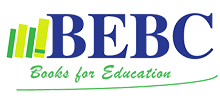Title: How to Teach Speaking (How to … Series)
Publisher: Pearson
Author: Scott Thornbury
Reviewer: Sharon Chalmers, Director of Studies, Live Language, Glasgow
Overall rating: 
|
Grade: 5/4/3/2/1 |
Comments (5 being the highest grade and 1 the lowest) |
|
4.5 |
Another winner from the ‘How to’ series. This title provides an in-depth look at speaking as a skill and how best to improve a student’s performance in this area. In the early years of a teacher’s career, it’s often the case that a learner performing a speaking activity is considered enough for their communication skills to be able to improve. This is rarely the case – there are a large number of factors to consider when setting up a speaking activity. This title starts by dissecting in some detail what features need to be in place for a speaker to be effective.
Starting with what speakers do and then need to know, Thornbury very effectively highlights the plight of the student. When speaking in our native language, we have little awareness of the complexity or nature of being able to communicate. The first 2 units of the text bring to the reader’s attention the influences affecting the speaker before examining the topic from the perspective of a student speaking L2. Although the first two units are fairly dense, the author effectively maps them to provide a framework for the rest of the text.
The next 3 units focus on awareness raising, appropriation of existing knowledge and autonomy. The units contain practical ideas on how to achieve these. Suggested lesson activities are excellent and often provide alternative methods of exploiting them. I liked the way the proposed activities highlighted how to use traditional core texts. It makes the book very easy for novice and more experienced teachers to integrate into their core curriculum, requiring minimal materials creation.
The final chapter is extremely useful. It goes through how to plan and assess speaking. There is an excellent section on how to organise a syllabus with various suggestions and approaches.
Overall, this title is excellent and perfect for teacher trainers, NQTs and experienced professionals alike. The only tiny suggestion I can think of is perhaps to provide a glossary to aid ease of use. It would help teachers dip in and out the book more efficiently, if the concepts and terminology outlined in the first few units were easily accessible.
|
|
What outstanding strengths/ weaknesses do you feel this title possesses? Strengths:
|
|
On which courses do you envisage being able to use this material?
|
© Copyright BEBC REVIEW PANEL 2015 – this review may be reproduced but only with this acknowledgement
